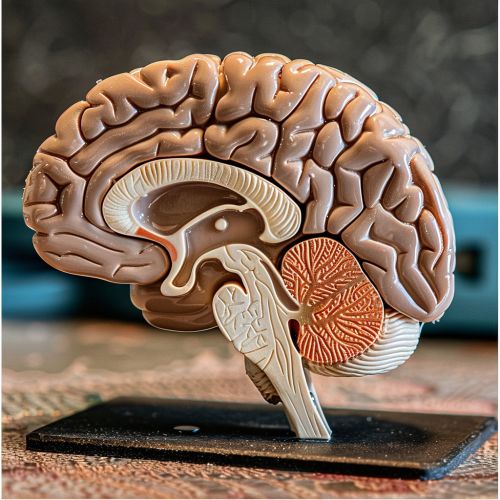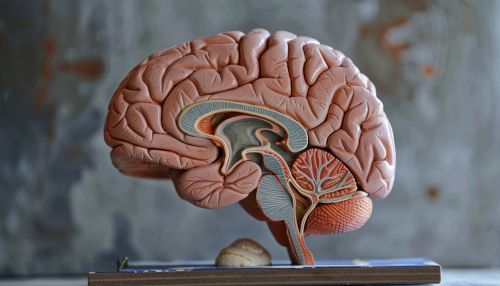Olfactory system
Anatomy of the Olfactory System
The olfactory system is a sensory system used for the sense of smell (olfaction). This system includes the organs and cells that contribute to the process of detecting and interpreting smells. The primary components of the olfactory system are the olfactory epithelium, the olfactory bulb, and the olfactory cortex.


The olfactory epithelium is a specialized epithelial tissue inside the nasal cavity that is involved in smell. It contains olfactory sensory neurons, which are receptors for smells and are capable of regenerating throughout life. These neurons have cilia (hair-like extensions) that increase their surface area and allow them to function more effectively.
The olfactory bulb is a structure located at the front of the brain, above the nasal cavity. It receives neural input about odors detected by cells in the nasal cavity and processes this information before sending it to other areas of the brain. The olfactory bulb is a critical part of the olfactory system, as it is the first point of synaptic processing in the olfactory pathway.
The olfactory cortex is the region of the brain that is responsible for processing smell. It is located in the temporal lobe and is part of the limbic system. The olfactory cortex receives information from the olfactory bulb and is involved in the identification and perception of odors.
Function of the Olfactory System
The primary function of the olfactory system is to detect and interpret smells. This process begins when odor molecules enter the nasal cavity and bind to receptors on the cilia of olfactory sensory neurons in the olfactory epithelium. This binding triggers an electrical signal that is transmitted to the olfactory bulb.
In the olfactory bulb, the signal is processed and then sent to the olfactory cortex, where it is interpreted as a specific smell. The olfactory system is capable of distinguishing a wide variety of different smells, thanks to the large number of different olfactory receptors in the olfactory epithelium.
The olfactory system also plays a role in taste, as the perception of flavor is a combination of both taste and smell. Furthermore, the olfactory system is involved in the detection of pheromones, chemical signals that can influence behavior and physiology.
Disorders of the Olfactory System
There are several disorders that can affect the olfactory system and impair the sense of smell. These include anosmia, hyposmia, and dysosmia.
Anosmia is the complete loss of the sense of smell. This can be caused by a variety of factors, including damage to the olfactory system, certain medications, and some diseases, such as Parkinson's disease and Alzheimer's disease.
Hyposmia is a reduced ability to smell. Like anosmia, it can be caused by a variety of factors, including aging, certain medications, and some diseases.
Dysosmia is a condition in which there is a distortion or alteration in the perception of smell. This can occur as a result of damage to the olfactory system or as a symptom of certain neurological disorders.
Olfactory Research
Research into the olfactory system has provided valuable insights into the functioning of the nervous system and has potential applications in the development of treatments for disorders of the olfactory system. For example, the ability of olfactory sensory neurons to regenerate throughout life has led to research into the potential use of these cells in the treatment of neurodegenerative diseases.
Furthermore, research into the olfactory system has the potential to improve our understanding of the sense of smell and its role in behavior and physiology. This could lead to the development of new methods for manipulating smell to influence behavior and physiology, with potential applications in areas such as marketing and healthcare.
